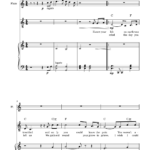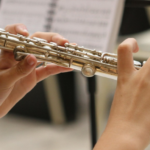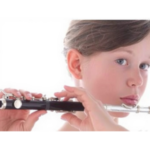 There’s something timeless about the sound of a traditional Irish flute—warm, earthy, and full of spirit. Whether echoing through green hills or lighting up a cozy pub session, this iconic wooden instrument carries generations of history and heart with every note.
There’s something timeless about the sound of a traditional Irish flute—warm, earthy, and full of spirit. Whether echoing through green hills or lighting up a cozy pub session, this iconic wooden instrument carries generations of history and heart with every note.
As a country flutist, I’ve always been drawn to the natural, expressive tone of Irish flute music. It’s a style that doesn’t just ask to be played—it asks to be felt.
🇮🇪 What Is the Traditional Irish Flute?
The traditional Irish flute is typically a wooden, keyless transverse flute—a cousin of the classical silver flute. It has a darker, breathier tone and is usually made from African blackwood, rosewood, or other dense hardwoods.
Unlike the modern concert flute, which emphasizes clarity and projection, the Irish flute is all about character, warmth, and rhythm. It blends seamlessly into traditional tunes but can also hold its own as a solo voice.
🎶 A Sound Steeped in Storytelling
Irish flute music is rooted in oral tradition and dance. Tunes are passed from musician to musician, evolving slightly each time but always retaining their spirit. You’ll often hear:
-
Jigs (6/8 time, lively and skipping)
-
Reels (fast and flowing in 4/4)
-
Hornpipes (swingy, dotted rhythms)
-
Airs (slow, emotional melodies)
What sets the Irish flute apart is how it breathes. The phrasing, ornamentation, and use of silence all bring life to each piece—whether joyful or melancholic.
👂 Learn by Listening
If you’re interested in learning this style, the best place to start is by listening. There are countless flute videos of Irish players performing in traditional and modern settings.
Look for players like:
-
Matt Molloy (The Chieftains)
-
Joanie Madden (Cherish the Ladies)
-
Michael Tubridy
-
Catherine McEvoy
Listen for subtle variations, rolls, cuts, and vibrato. Irish music is as much about feel and nuance as it is about notes on a page.
🎓 Learning the Irish Flute
You don’t need to start from scratch if you already play the silver flute—many fingerings are the same. However, playing in the Irish style does require some new techniques:
-
Ornamentation: quick grace notes and taps
-
Breath phrasing: expressive pauses and swells
-
Embellished tone: a darker, woodier sound
Whether you’re self-taught, taking online flute lessons, or joining local sessions, the journey into Irish music is incredibly rewarding.
🌾 Bringing Tradition to the Modern Stage
At CountryFlutist.com, I love blending traditional Irish melodies with modern arrangements, or even pairing them with other styles like country and folk. These tunes are alive—and they adapt beautifully.
We also offer custom arrangements of Irish songs for flute solo, duet, or ensemble, so you can bring a bit of the Emerald Isle into your own music library.
🪕 Join the Tradition
There’s a reason Irish flute music continues to thrive—it connects us to something bigger. It’s not just music. It’s movement, emotion, and memory. If you’re drawn to earthy, expressive sound, the traditional Irish flute just might become your new favorite voice.
Visit CountryFlutist.com to explore Irish-style arrangements, videos, and sheet music downloads.

















